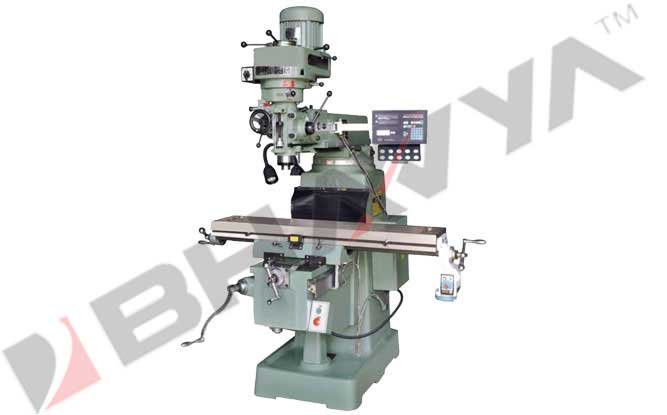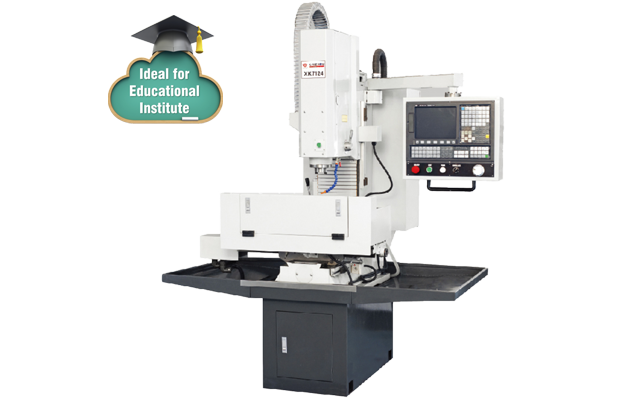The Milling Machine Tools Industry in Dubai is one of the most vibrant and growing industries in the Middle East. The industry’s growth is fueled by an expanding manufacturing sector and the increasing demand for machinery. A variety of different mills are available in the market, including horizontal boring mills, bed mills, planer-style mills, and vertical mills. Here is a brief overview of the various types of mills.
Vertical Mills
Vertical mills are among the most commonly used milling machines. They are particularly useful for sinking dies and cutting large metal plates. They are also useful in manufacturing products that have lower thermal effects.
Vertical mills are generally less complex than horizontal mills. They have a small learning curve and require less maintenance. They are also affordable. However, they may not work well for all projects. If you’re planning to use one, it’s best to know the different types. This will help you choose the right tools for your needs.
The most popular type of Vertical Mill is the turret machine. It is equipped with a table that moves in left and right directions. A turret machine can also be used for raising and lowering a quill.
There are also planer-type mills. They have three-direction spindles and can handle up to four tools at once. This increase in versatility helps companies to reduce tool changes.
Another type of machine is the mill-drill. It is similar to a drill press but uses a larger column and heavier spindle bearings. Some have electronic speed control. This is a great option for hobbyists.
Modern machines are also more energy efficient. They use advanced technologies to eliminate human errors and provide a smoother process. They can be used in a wide variety of industries.
A lot of manufacturers are using these machines to save time and reduce costs. They are also a good fit for shops that need to make a lot of cuts. Choosing the correct milling machine can make or break your project.
The Vertical Milling Machine market is segmented by applications, region, and type. In 2018, the global Vertical Milling Machine market was valued at USD 6.91 billion. It is expected to reach USD 8.77 billion by 2026.
Planer-style Mills
Planer-style mills are milling machine tools that allow heavy workpieces to be processed without table overhang. They can be a useful tool for industrial manufacturers and machining workshops. They are available in different sizes, and they can be configured according to user needs. They are more reliable than lathes and have a smaller investment. They are also simpler to operate.
There are two main types of planer-style mills. One is the jig borer, which is an offset milling machine that can perform light slot milling, while the other is the slotting machine, which is a vertical planer. Both of them are similar, but the jig borer has a longer spindle throw. It can bore bolt-hole patterns more accurately.
The jig borer has a cast-iron structure. It is designed to perform light slot milling and bore holes. The slots are not as smooth as the ones cut by the slotting machine. The bed of the jig borer is more accurate and the spindle throw is longer.
The planer is a type of machine tool that is more commonly used in small and medium-sized factories. These machines have a relatively simple structure, and are easier to use than lathes. They are still used for initial processing jobs in factories.
A gantry planer is a more structurally complex planer than a bull head planer. It is primarily used for long and narrow planes. It can process multiple workpieces at a time, and the feed motions are often vertical interval motions. The Bhavya manufactures a wide range of milling machines and machine tools.
Bed Mills
There are many types of milling machines. Each type has a different set of features. Some are specialized for a particular type of work. For instance, some of them are used for producing single point cutting tools, while others are suitable for producing multi-tooth tools.
A milling machine is a tool that is used to produce custom parts. The process of milling requires a cutter with a large number of teeth. This cutter rotates at high speed, removing material by many small cuts.
The milling process can be performed by varying the head pressure, cutter speed and feed rate. This enables a variety of shapes and sizes to be made.
The type of milling machine you choose depends on the size of the piece of work you need to produce. There are bed mills, knee mills, vertical mills, and gantry mills. Some of these machines can be equipped with right angle rotary tables for further flexibility.
Milling machines are also classified into a number of categories, depending on their orientation, power source, and size. There are also milling machines with a vertical spindle and those with a horizontal spindle. Some of them can also be categorized as vertical and horizontal ram-type mills.
Bed mills are a close cousin of knee mills. These machines feature a sturdy solid column. They are available in CNC versions and offer greater load capacity. They are available with pendants to make it easier to access the cutting tool. They are designed for use with 1500 lbs of load.
In contrast to knee mills, bed mills are more rigid. They are also available with reinforced ribbing to provide stability for heavy milling. They are also able to handle half the load of a knee mill.
Horizontal Boring Mills
Horizontal boring mills are machine tools that are used to drill or cut holes in large parts. They are usually found in heavy industries, and are designed to be powerful and accurate. They are mainly used to repair older machinery, and are also useful in the oil and gas and energy industries. These machine tools have a strong reputation for producing high-quality workpieces.
There are several types of horizontal boring machines available. The main ones are table type, floor type, and vertical. All of them have similar features, but differ in their design.
The table type moves in two axes, while the floor type doesn’t have a table. The floor type is a very versatile solution, as it is capable of performing many different operations. It is ideal for machining up to five tons.
There are also CNC-equipped machines. These are very useful when cutting a large number of parts at the same time. There are a lot of benefits to using CNC technology, including precision, automation, and speed.
The main difference between a table and a floor type boring mill is that the table is stationary. Unlike a floor type, the table on a horizontal boring machine moves forward and backward, which makes it more efficient at completing a wide range of tasks.
Another difference is that the spindle on a horizontal boring machine rotates under power. This creates the force necessary to cut the workpiece. Usually, the spindle extends from the headstock, and a spindle anchor connects to the body of the mill. The indexable insert is a part of the spindle that can be extended, which helps propel the cutter into the workpiece.







